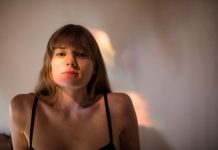Seasoned or occasional travelers, we all have trips we dream of taking, places praised by friends on their return from vacation, or discovered while reading. Some even make a list of it. Here we bring you our own list of the 500 most fascinating and memorable places in the world, ranked by their success with the Lonely Planet community. They will know how to challenge you, move you or simply make you want to share your experience.
On our planet there are an infinite number of beautiful landscapes, from picturesque white sand beaches to jaw-dropping mountain ranges. There are so many wonderful places to see around the world. If you are looking to relax and discover some of the most beautiful places in the world, in this article we discover together some of the most beautiful places in the world that you won’t believe really exist.
We hope it inspires you to make a list of your own desires. Here are the top 31 destinations!
The most beautiful places in the world to visit
Dream destinations and landscapes, unusual places, unmissable monuments or museums – even two hours from Paris: here is our selection in pictures of places on the planet that are worth seeing. In winter or summer, we bet you’ll feel like you travel, either with your spouse-e or family.
Temples of Angkor, the Hindu paradise on Earth (Cambodia)

The site that took the top spot had a crushing victory, to say the least, with a 36% deviation from the next site, while for second place the results were very close. So what is the secret of the success of the Angkor archaeological site?
The largest temple in the world dedicated to the Hindu god Vishnu, dating from the 12th century, Angkor Wat stands out a bit in a predominantly Buddhist Cambodia. Huge representation of Mount Meru, the abode of the Hindu gods, it is the undisputed centerpiece of the site.
It is made up of thousands of sandstone blocks adorned with bas-reliefs so delicate and graceful that they seem sculpted by the gods; they illustrate the legends of the Ramayana, the Mahabharata and the Puranas. This magnificent monument is the most precious vestige of a Hindu kingdom that once extended as far as Burma, Laos and southern China.
Even in Southeast Asia, so rich in temples, Angkor is out of the ordinary. This set contains more than 1,000 temples, shrines and tombs whose towers rise like those of a city lost in the jungle of northern Cambodia.
Angkor is a powerful testimony to the ambitions of human creativity and the fundamental human need to leave a lasting mark. The place generates an awareness dear to Buddhism: nothing material is eternal; over time, nature always reclaims its rights. More than just a worthy ruin, Angkor is an epiphany set in stone.
Great Barrier Reef, an underwater El Dorado (Australia)

The second place in our ranking is occupied by a natural wonder which stretches for more than 3000 km off the northeast coast of Australia. No need to introduce the Great Barrier Reef. Let us just remember that this is the largest coral reef in the world, populated by 400 species of corals and 1,500 species of fish. Some 30 species of whales, dolphins and porpoises have been identified there, as well as 6 species of sea turtles and 17 varieties of sea snakes.
The reef is in danger of disappearing or at least losing its splendor. The warming of the oceans is responsible for the bleaching and death of corals and nothing suggests that the phenomenon can be stopped. For the moment, the reef remains an underwater paradise for divers and snorkelers. Even on the surface and around the Queensland coast, this essential ecosystem captivates visitors, with its abundant feathered fauna and countless tropical islands and beaches.
Machu Picchu, the Inca enigma (Peru)

Only a few voices separated the second winner from the third. However, they differ in every way … The blissful contemplation of Machu Picchu from the Sun Gate after four grueling days of trekking on the Inca Trail has become a rite of passage during any trip to Peru. The city, dating from the 15th century, is surrounded by a spectacular Andean landscape and suspended above the void, but its main attraction lies in the mystery that surrounds it. It’s a real enigma.
There is no shortage of hypotheses – royal retreat, temple of the Sun virgins, alien landing strip – but none could be confirmed. Even Hiram Bingham, the American amateur archaeologist who discovered the ruins in 1911 and excavated there for years, didn’t really know what he was looking for (he died mistakenly believing he had discovered Vilcabamba, the legendary lost city of the Incas..) Today, you can wander through the mysterious hilltop city, giving free rein to your imagination. Don’t miss the ascent of Huayna Picchu, the craggy Andean peak that overlooks the ruins, along the vertiginous path leading to the Temple of the Moon.
Great Wall of China, Imperial Wall (China)

Each country has its flagship monument; in China, this monument crisscrosses most of the country. The Great Wall is not a wall like the others, but an imposing maze of fortifications stretching over 8,850 km across the rugged terrain of the north of the country. Built in successive phases over more than a millennium, the Great Wall ultimately failed in its mission – the fight against Mongol invasions – but became the emblem of the Ming Dynasty, the greatest power to have ruled in the Far East until the advent of Mao Zedong.
Contrary to what people say, the Great Wall is not visible from space, but facing this building which seems to extend as far as the eye can see, one could be convinced. A few die-hards roam the entire wall on foot, but even if you settle for just one section, you will be in awe of its indestructible aura. You will have the choice between imperial grandeur (near Beijing ), military precision (Gansu) or ageless desolate landscapes (Inner Mongolia).
Taj Mahal, the Mughal pearl (India)

How to achieve architectural perfection? Start with a few acres of sparkling white marble, and add a few thousand semi-precious stones chiseled and set in elaborate Islamic patterns. Choose a sublime setting on the edge of a sacred river, in a sumptuous garden of perfect symmetry. Wrap it all up in an intriguing love story. You get the Taj Mahal.
Built in 17th century India by Mughal Emperor Shah Jahan to serve as a mausoleum for his favorite wife Mumtaz Mahal, the Taj has attracted travelers for centuries. Ironically, at the end of his life the Emperor was imprisoned by his son at Agra Fort, from where the direct view of the Taj was the only memory of his lost fortune.
Despite the flood of visitors that it drains, the Taj Mahal continues to open the doors of a vanished era. The specters of Mughal India line the glistening marble of the courtyards, slipping under the arches and behind the trellises. No other Indian monument reflects the customs and atmosphere of that time so perfectly.
Grand Canyon National Park, an exceptional natural spectacle (United States)

Grand Canyon National Park, an exceptional natural spectacle (United States) When you contemplate this deep rift in the earth’s crust, it’s two billion years stretching out before your eyes. The figures do not leave you indifferent. Set ablaze by the setting sun, covered with oceans of mist or sprinkled with snow crystals, this 450 km long and almost 2 km deep corridor is to nature what cathedrals are to architecture. Facing the Grand Canyon, you will feel both tiny and grown up, moved and serene, poet and dumb. As explorer John Wesley Powell said: “The wonders of the Grand Canyon are unspeakable and cannot be returned by speech.” We had to try anyway. Come hike, raft on the fiery Colorado, observe condors and black bears, or just have a blast.
Colosseum, theater of Roman cruelties (Italy)

Nothing like a Roman battle arena to awaken the historian who sleeps in you. Symbol of ruthless power, this massive 50,000-seat amphitheater is the most fascinating of Roman remains. The gladiators clashed here and the condemned faced off against the beasts in front of the desperate crowd. Two thousand years later, the hold exerted by this place on the visitor has remained intact.
The “Colosseo” first impresses with its size (however, the amphitheater was named so, not because of its size, but the Colossus of Nero, a statue erected nearby). Winding your way through the 80 arcades and sitting down in a matter of minutes was arguably no easy feat: slip into the shoes of a Roman and imagine having to elbow your way with the other onlookers. Magistrates and high dignitaries took their places in the lower tiers, as close as possible to the action; the wealthy citizens occupied those in the middle; the plebs sat upstairs. The women, considered second-class citizens, were relegated to the top of the stands and forced to crane their necks to catch a glimpse of the spectacle.
Iguazú Falls, crashing waterfalls (Argentina – Brazil)

The Guaraní word designating the place where the Iguazú throws itself from the plateau to join the Paraná is really weak: the Great Water. Indeed, the force of these waterfalls is extraordinary, and the boats stationed on the foaming basins below look like frail matches. Footbridges allow you to approach the waterfalls, which are set in a corner of humid subtropical forest forming a national park of 55,000 ha populated by animals, in particular jaguars.
The Alhambra, the Moorish masterpiece of Spain (Spain)

The Alhambra in Granada is one of the most spectacular medieval monumental complexes, and one of the finest examples of Islamic art in the world. It is also the most enduring witness to eight centuries of enlightened Muslim rule in medieval Spain. The fortified towers of the Alhambra dominate the city: its red walls can be seen from afar above the cypress trees and elm trees, against the backdrop of the snow-capped peaks of the Sierra Nevada.
Inside, a network of sumptuous palaces and irrigated gardenswhich have inspired many dreams and legends. The contrast between the meticulousness of the ornaments and the epic dimensions of the Alhambra makes all its charm. The gardens of the Generalife, of perfect proportions, are a striking evocation of Paradise, while the interior of the Alhambra shines with unearthly beauty. In the center, the Nasrid Palaces (Palacios Nazaríes), with countless rooms, are the Alhambra’s most precious treasure. Harmonious balance between space, light and shadow, water and greenery, they must plunge the sovereign into the heart of an earthly paradise. The walls are covered with ceramic tiles, muqarnas (corbels), vaults and stucco ornaments, and the Courtyard of the Lions (Patio de los Leones) is a masterpiece of Islamic geometric tracery. In short, the Alhambra is the most beautiful monument in Spain.
Hagia Sophia, the fusion of beliefs (Turkey)

Part basilica, mosque and museum, Hagia Sophia (Aya Sofya), in Istanbul, is unlike any other monument, defying categorizations as it defied the laws of architecture when it was built 1,500 years ago. The Byzantine Emperor Justinian I dreamed of a church capable of eclipsing the wonders of Rome, its rival, and whose majesty would also be that of an earthly paradise. His wish was granted. Hagia Sophia, which became the main Orthodox church, still dominates the city. It’s a huge space, almost cosmic, creating an impression of unheard-of grandeur – all the more so for the time. Inside, it reveals its treasures one by one: immense columns brought back from various cities of ancient Greece and the Roman Empire, and vast galleries adorned with glittering mosaics. And then, grandiose, rising above the smooth marble, the famous dome, which imitates the shape of the celestial vault – it is better to forget, however, that it collapsed several times.
The history of Hagia Sophia is as extraordinary as the building: indeed, few monuments have undergone so many metamorphoses. After being plundered by the Crusaders, it was transformed into a mosque after the capture of Constantinople by the Ottomans in 1453, as evidenced by its four gigantic minarets – surprisingly, the new mosques in Istanbul (notably the famous Blue Mosque) took over this architectural feature. In 1935, it was desecrated and transformed into a museum. Entering it nevertheless remains a spiritual experience., whether to marvel at a golden fresco sparkling in the evening light, or to embrace Christian masterpieces and Islamic calligraphy in the same glance. Like Istanbul the Magnificent, Hagia Sophia stands at the crossroads of continents and beliefs.
Pamukkale, Turkey

Pamukkale (“cotton castle” in Turkish) is a group of natural hot springs located 19 kilometers north of the city of Denizli, and is one of the most beautiful places in the world for tourism in the Aegean region. These springs were formed more than two thousand years ago from the layers of white travertine. The Romans considered this place a sacred place and called it “Hierapolis” which means “the holy city” that you should visit it at least once in your life.
The Pyramids, Egypt

The Pyramids of Giza are three 4th dynasty pyramids (c. 2575-2465 BC) built on a rocky plateau on the west bank of the River Nile in northern Egypt. In ancient times they were included among the Seven Wonders of the World. If you are interested in discovering the wonders of Luxor and Aswan and the Nile, book your next Nile cruise now with Memphis Tours. The designations of the pyramids – Khufu, Khafre and Menkaure – correspond to the kings for whom they were built. The northernmost and oldest pyramid of the group was built for King Khufu (Greek: Cheops ), the second king of the 4th dynasty.
Negril, Jamaica

Negril is a small paradise beach town located on the west coast of the Caribbean island of Jamaica. This wonderful area is approximately a 75-minute drive from Montego Bay Sangster International Airport. Even though it is one of the furthest parts of Jamaica to reach, it is absolutely worth it! Negril is one of the most beautiful places in the world of particular interest because it offers you the Caribbean views you dream of with white sand beaches, crystal clear water and lots of swaying palm trees. This place is truly the perfect escape from the daily stress of life. There are so many activities to do there such as scuba diving, snorkeling, kayaking, off-site golf and many other daily activities.
Petra, Jordan

Petra is one of the most beautiful and possibly the most instagrammable destinations in the Middle East and around the world. And it’s no surprise why it was voted one of the New 7 Wonders of the World in 2018. The Wonder of the World is arguably Jordan’s most precious treasure and greatest tourist attraction, this ancient city which is located in southern Jordan and is surrounded by beautiful red rocks and steep gorges.
Banff National Park, Canada

When it comes to a place of the most beautiful places in the world to visit few places in the world are as famous as Banff National Park, located in the heart of the Canadian Rockies. Banff is a place to enjoy the great outdoors. Almost all of the best things to do in Banff are outdoor activities like hiking, alpine lake cruises, wildlife viewing, and even mountain biking. The park is also known for its abundance of beautiful lakes, including Lake Louise, Lake Moiraine, and Minnewanka Glacial Lake. They are the most popular for enjoying breathtaking beauty and each of them more pristine than the other.
The Bacalar Lagoon, Mexico

The Bacalar Lagoon, also known as the Lagoon of the Seven Colors, is one of the most beautiful places in the world. It is located in the southeastern part of Mexico, approximately 20 miles from the Belize border. In terms of tourist attractions, there isn’t much to see but I recommend you stay a few days to enjoy nature and tranquility. The name of the city Bacalar derives from a Mayan expression which means “the place where the sun rises”. When you see the sunrise over the lagoon and all the shades of yellow, pink and orange of the sky are beautifully reflected in the clear waters, certainly all these colors will leave you breathless.
Coyote Buttes (“The Wave”) – Arizona, USA

If the Catalan surrealist Salvador Dalí had painted natural scenes, this would have been a groundbreaking work. Ocher and amber-colored layers from the Jurassic period lie on top of each other here and form a wavy background that has become a popular destination for photographers and hikers.
However, you need a permit to visit this protected landmark and due to a lottery procedure by the Bureau of Land Management this is not exactly easy – so start your registration early. If you don’t get a permit, don’t worry, Arizona is a state that boasts numerous other impressive natural wonders, including Antelope Canyon and the Upper Grand Canyon.
Derweze – Karakum Desert, Turkmenistan

The small village of Derweze in Turkmenistan gained notoriety about 40 years ago thanks to the work of Soviet geologists who dug into a cave filled with natural gas. To stop the gas from escaping, a fire was lit to completely burn the gas in the cave. The geologists expected the fire to burn for a few days.
Today, 40 years later, the inferno is still raging: Over a width of 70 meters in the middle of the desert, the flames continue to flicker cheerfully, so that locals nicknamed the place “Gate to Hell”.
Mendenhall Glacier – Tongass National Forest, Alaska, USA

Because of their constantly changing nature, glaciers have a lot in common with humans. Now, as the composition of the ice in the Mendenhall Glacier changes due to global warming, its ice caves, which are a result of the melt water flowing under and hollowing out the ice sheets, are also changing.
The thinner the ice in the cave ceiling, the lighter its shade of blue, which is the only source of light in these parts of the cave.
However, you have to earn the visit to these caves with some effort: First you have to paddle in a kayak to the glacier or hike there, then climb it with crampons and finally descend carefully into its subterranean depths.
Salar de Uyuni – The Andes, Bolivia

It doesn’t rain often here, but when the time comes, the huge salt surface is transformed into a heavenly mirror that seems to extend into infinity and actually covers an area that is only slightly smaller than Jamaica. Salar de Uyuni is also one of the flattest places on earth – a property often used for optical illusions (forced perspective) in photography. The salt flats are close to the Andes ridge, 3,656 meters above the sea floor (which means it can get quite cold here and the air is thin – so prepare accordingly).
Grand Prismatic Spring – Yellowstone National Park, Wyoming, USA

The vibrant colors of this thermal spring correspond to those of the tiny rainbow that forms when light refracts itself in a geometric prism – hence the name. The red, orange, yellow, green and blue colors are created by the different types of bacteria that live in the mineral-rich, hot water, the temperature of which can reach 85 ° C. The Grand Prismatic Spring has a diameter of almost 113 meters, making it the third largest thermal spring in the world.
Deadvlei – Namib-Naukluft-Park, Namibia

Deadvlei is a made-up word that is made up of the English word “dead” and the Afrikaans word “vlei” and translated means something like “dead sink”. The acacia trees, which are scattered over the decayed landscape, have been standing here for more than 600 years as dried up skeletons, which here, in one of the driest places in the world, lack the moisture that would be necessary to rot. This parched patch of earth is also close to some of the largest sand dunes in the world, rising up to 383 meters from the desert floor.
The Pinnacles – Nambung National Park, Australia

The “Pinnacles” in the Namburg National Park are often compared to gravestones, termite mounds, fingers or other body parts. The limestone pillars are surrounded by a certain mystique, especially at dusk, when the darkness is only broken by the moonlight and the landscape appears as an eerie, ghostly wilderness. There is still controversy among scientists about the origin of the Pinnacles, but it is agreed that some of them have been here for 500,000 years.
Perito Moreno Glacier – Los Glaciares National Park, Santa Cruz, Argentina

The Perito Moreno is 28 kilometers long and 4.8 kilometers wide, making it one of the few glaciers in the world that are growing. In the summer months you can often see huge chunks of ice falling into the Argentino Sea, while the gigantic ice masses cast a huge shadow over the icy landscape in winter. The barely inhabited region in Patagonia is an eerily quiet, mystical place where the Perito Moreno impressively displays the astonishing wonders of nature.
Fly Ranch Geyser – Nevada, USA

Let’s go back to 1916: A ranch owner is digging a well. Unsuspecting, he breaks through the wall to a cavity that is filled with geothermal water. The man gives up the well and lets nature take its course. 101 years later we are standing in front of a beautiful geyser, which has been ejecting minerals in bright colors from the underground to the surface since then.
Today, the geyser is part of a 1,500 acre area owned by the organizers of the Burning Man Festival and there is talk of long-term opportunities, the geyser and its surroundings as catalysts for the festival’s cultural influence beyond Black Rock’s borders City beyond to use.
Lake Hillier – Recherche Archipelago, Australia

Lake Hillier, also known as the Pink Lake, is a strangely colored body of water on Middle Island – the largest island in the Recherche Archipelago, off the coast of Esperance in Western Australia. The 600 meter long lake is only separated from the Southern Ocean by a narrow strip of sand dunes with sparse vegetation.
While many are still puzzled about the exact cause of the pink coloration, there are indications that it comes from a dye produced by bacteria that live in the salt crust of the lake. Swimming in the water is harmless to health, but it is not that easy because the salt content is similar to that of the Dead Sea, so you will probably be more likely to float on the surface of the water if you dare to approach the colored lake.
Kilauea – Big Island, Hawaii

The indomitable Kilauea volcano erupts from time to time in 1983 and then pours rivers of molten lava into the Pacific, where the hot mass meets the cool water in a dramatic way. Thanks to various tours under professional guidance, who accompany you over the burned pastures as close as possible to the volcano, you can watch this impressive event from a distance. However, you should definitely not go to this region alone, as the eruptions of the volcano are unpredictable.
The Great Blue Hole – Belize

The gigantic underwater cave of Beliz was created during the Ice Age when natural forces formed an almost circular hole in the sea floor. The Great Blue Hole is not only great to see from the air, it is also a great place to dive thanks to the diverse marine life that divers explore from near and far.
However, you have to have at least 24 dives behind you, because it takes a certain degree of skill to explore the stalactite-riddled cave in the depths of the ocean. Or you can grow your gills and do it like freediver Guillaume Néry, who has dived several times down and back into the cave without breathing apparatus.
Shetani Lava Field – Tsavo National Park, Kenya

According to a local legend, the lava fields are the work of the devil (“Shetani”) himself, who emerged from the earth a few hundred years ago. The fields stretch 60 kilometers across the savannah, creating an eerie landscape in a remote area of the Tsavo National Park, which in itself is already a region full of myths and superstitions. The predators here don’t like to be disturbed, so if you leave your safe jeep you should definitely do so in the company of a park ranger who you can hire for this purpose.
Zhangjiajie National Forest Park – Hunan, China

You might think that the huge stone pillars in Zhangjiajie National Forest Park come from a galaxy far, far away. The film Avatar, which was released in theaters in 2009, showed some scenes that were inspired by the same rock pillars found in the province of Hunan, which led to the renaming of the 1,080-meter-high Southern Pillar of Heaven.
Today it is known as “Avatar Hallelujah Mountain” and is a towering beauty that, together with many other formations, forms an impressive silhouette. From the Zhangjiajie Grand Canyon Glass Bridge – the longest and highest glass pedestrian bridge in the world – you can look down in amazement and, you will have guessed it, put your fear of heights to the ultimate test.
Reynisfjara – Vik, Iceland

The black sand beach near the village of Vik in Iceland is not only a beautiful natural spectacle, but also home to numerous species of birds, such as puffins, fulmar and black guillemot, all of which have nestled on the pebble beach. And for good reason: with its unique black color, lined with columns made of light basalt that nestle against the rock face, the beach exudes a very special atmosphere.
































































